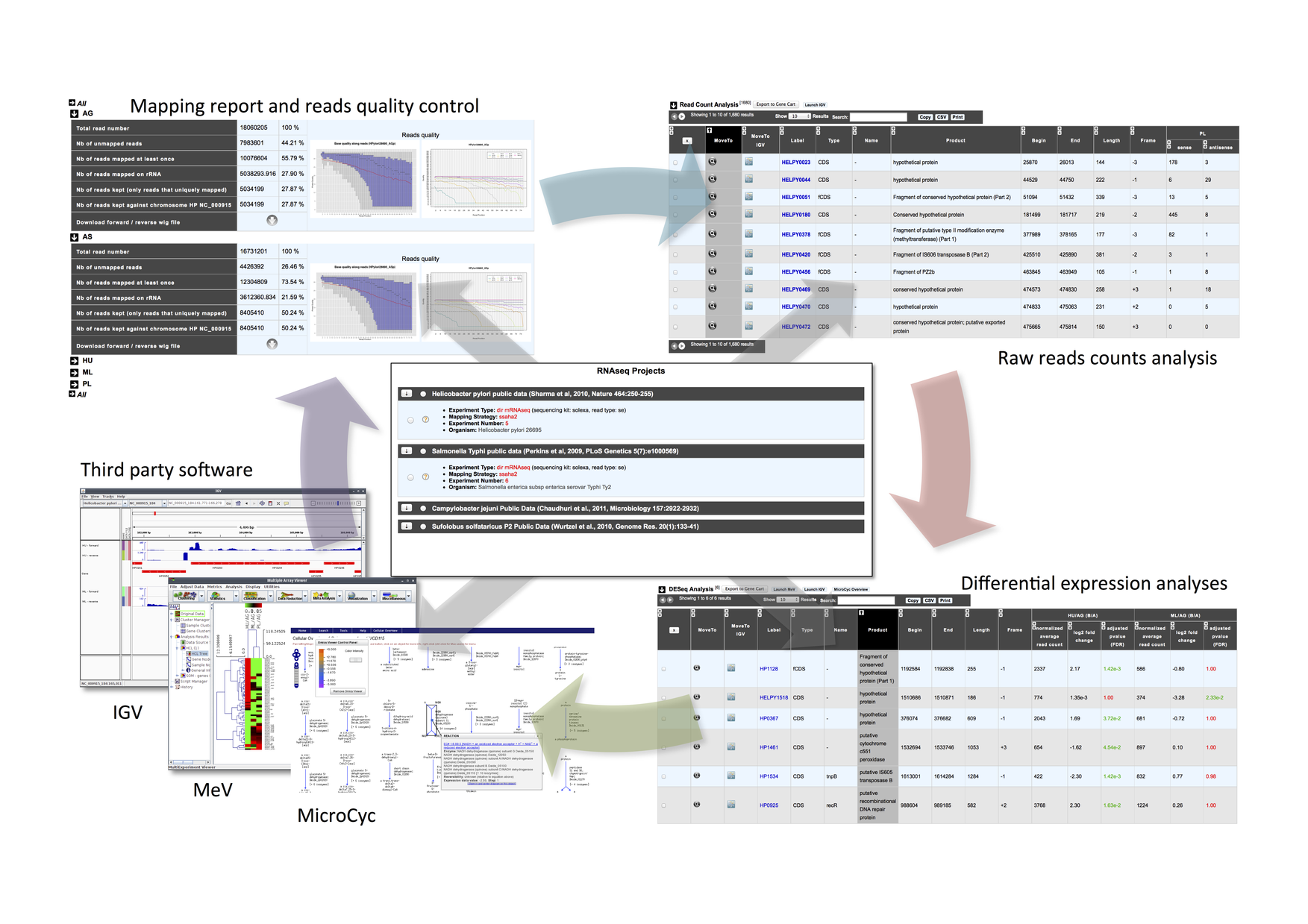Release of TAMARA: Transcriptome Analyses based on MAssive sequencing of RnAs
Our new Microscope extension TAMARA focuses on transcriptomic data analyses (quantitative, Transcription Start Sites (TSSs)) based on deep sequencing of mRNAs. The current computation pipeline embeds the following third-party software i) SSAHA2 v2.5.1 [1], BWA v0.5.7 [2] and Bowtie v0.12.3 [3] for the reads mapping step; ii) Bedtools v2.10.1 [4] and DESeq v1.4.1 (R-Bioconductor) for Differential Expression (DE) analyses [5]. At present time, it can only run on single end data and for a unique organism. However, we are working on a version which will be able to handle paired-end reads and METAtranscriptomes data as well.
The database has been designed to ensure the storage of metadata (experimental conditions, sequencing runs…) and all the results of the computation pipeline (transcripts coverage, expression levels, statistical tests, etc). The current model supports the analysis pipeline to run on several projects in parallel, and the integration of the corresponding RNA-Seq data with all other MicroScope data.
Most of the RNA-Seq results can be browsed online or download locally. Raw and normalized expression levels can be displayed for any genomic object on any experimental condition, and all appropriate pairwise comparisons of experimental conditions can be directly queried from the interface. Additional links to the Integrative Genomics Viewer software [6] and to the Multi-experiment Viewer software [7] are provided for further data analysis. The gateway between the main annotations and the RNA-Seq databases enables the use of other MicroScope tools and extends exploration possibilities to metabolic pathaways, orthologous genes searching, etc.
4 public projects are today available. You can play with this new tool at:
http://www.genoscope.cns.fr/agc/microscope/expdata/rnaseqProjects.php
Your feedbacks are welcome !
References:
1. Ning, Z. et al. (2001) SSAHA: a fast search method for large DNA databases. Genome research. 11, 1725–9.
2. Li, H. and Durbin, R. (2009) Fast and accurate short read alignment with Burrows-Wheeler transform. Bioinformatics (Oxford, England). 25, 1754–60.
3. Langmead, B. et al. (2009) Ultrafast and memory-efficient alignment of short DNA sequences to the human genome. Genome biology. 10, R25.
4. Quinlan, A. R. and Hall, I. M. (2010) BEDTools: a flexible suite of utilities for comparing genomic features. Bioinformatics (Oxford, England). 26, 841–2.
5. Anders, S. and Huber, W. (2010) Differential expression analysis for sequence count data. Genome biology. 11, R106.
6. Thorvaldsdóttir, H. et al. (2012) Integrative Genomics Viewer (IGV): high-performance genomics data visualization and exploration. Briefings in bioinformatics. DOI: 10.1093/bib/bbs017.
7. Saeed, A. I. et al. (2006) TM4 microarray software suite. Methods in enzymology. 411, 134–93.

